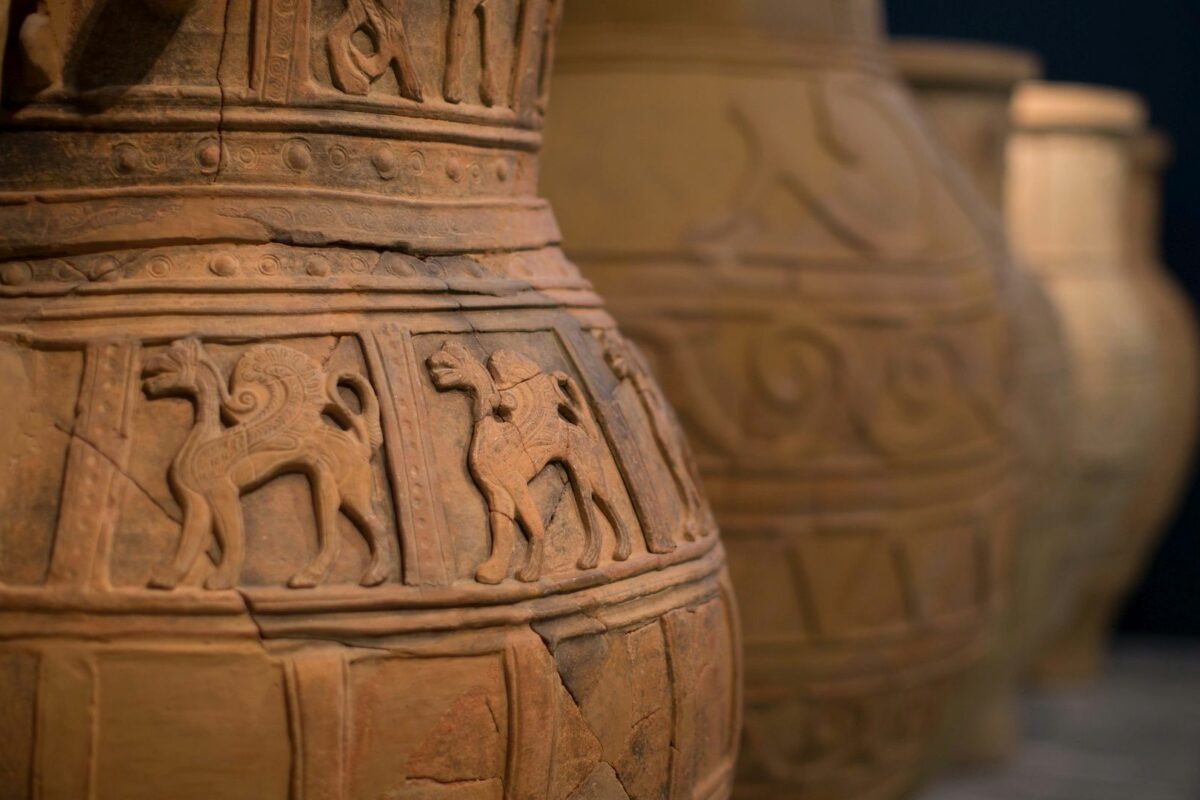
Spanning thousands of years, the evolution of ceramic art on Crete offers a fascinating glimpse into the cultural and artistic heritage of Crete. Here’s a journey through the history of Cretan ceramic art, showcasing its significance and beauty.
The Minoan Era: The Birth of Ceramic Excellence
The roots of Cretan ceramic art can be traced back to the Minoan civilization, which flourished on the island from approximately 3000 to 1100 BCE. Minoan potters were renowned for their skill and creativity, producing some of the most beautiful and intricate ceramics of the ancient world.
Key Features:
- Kamares Ware: One of the most distinctive types of Minoan pottery, Kamares ware is characterized by its thin walls, vibrant colors, and intricate designs. Often decorated with floral motifs, marine life, and geometric patterns, these ceramics were both functional and decorative.
- Pithoi: Large storage jars known as pithoi were used to store grains, olive oil, and wine. These impressive vessels, often decorated with relief patterns, showcase the Minoans’ technical prowess and their ability to create both utilitarian and artistic pieces.
The Classical and Hellenistic Periods: A Fusion of Styles
Following the decline of the Minoan civilization, Crete experienced various influences during the Classical and Hellenistic periods. The island’s ceramics began to reflect a fusion of Minoan traditions with new styles brought by Greek settlers and later by Roman conquerors.
Key Features:
- Geometric Designs: Pottery from this era often features geometric patterns, influenced by broader Greek artistic trends. These designs were typically more austere compared to the elaborate Minoan motifs.
- Figurative Art: During the Hellenistic period, Cretan ceramics began to include more figurative art, depicting scenes from mythology, daily life, and nature. This shift added a narrative dimension to the island’s ceramic tradition.
The Byzantine and Venetian Influence: A New Artistic Renaissance
The Byzantine and Venetian periods brought significant changes to Cretan ceramic art, infusing it with new techniques and styles that enriched the island’s artistic landscape.
Key Features:
- Glazed Pottery: The introduction of glazing techniques during the Byzantine era allowed for the creation of more durable and decorative ceramics. These pieces often featured religious motifs and intricate designs.
- Maiolica: Under Venetian rule, Crete became known for its production of maiolica, a type of tin-glazed pottery that was highly prized across Europe. These ceramics were often decorated with intricate patterns and vibrant colors, reflecting the island’s growing artistic sophistication.
Modern Cretan Ceramics: A Living Tradition
Today, Cretan ceramic art continues to thrive, blending ancient techniques with contemporary designs. Modern artisans draw inspiration from the island’s rich history, creating pieces that are both functional and decorative.
Key Features:
- Traditional Motifs: Many modern Cretan ceramics feature traditional Minoan and Byzantine motifs, preserving the island’s artistic heritage while adapting it to contemporary tastes.
- Innovative Designs: Contemporary Cretan potters experiment with new forms and techniques, pushing the boundaries of ceramic art while maintaining a deep respect for tradition.
Experience Cretan Ceramic Art
Exploring the world of Cretan ceramics offers a unique way to connect with the island’s history and culture. Visitors to Crete can discover exquisite pottery in local markets, galleries, and workshops, where artisans continue to practice this ancient craft. Staying at our hotel provides the perfect opportunity to immerse yourself in the island’s artistic heritage. Plan your visit with us and delve into the timeless beauty of Cretan ceramic art. Book your stay now and experience the rich tapestry of Crete’s artistic traditions.




